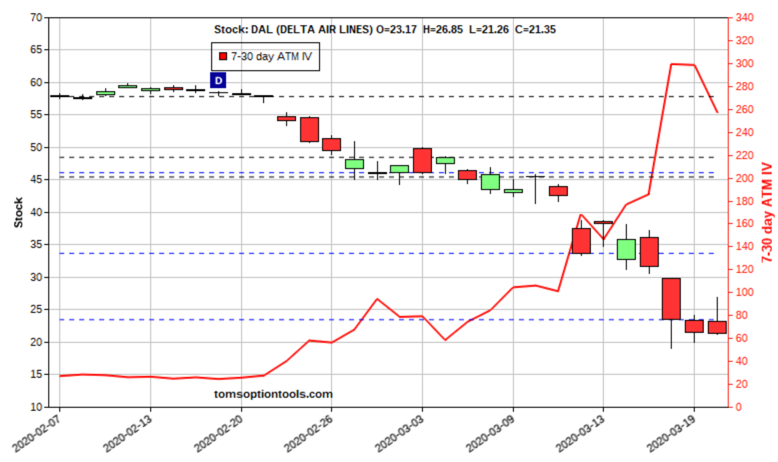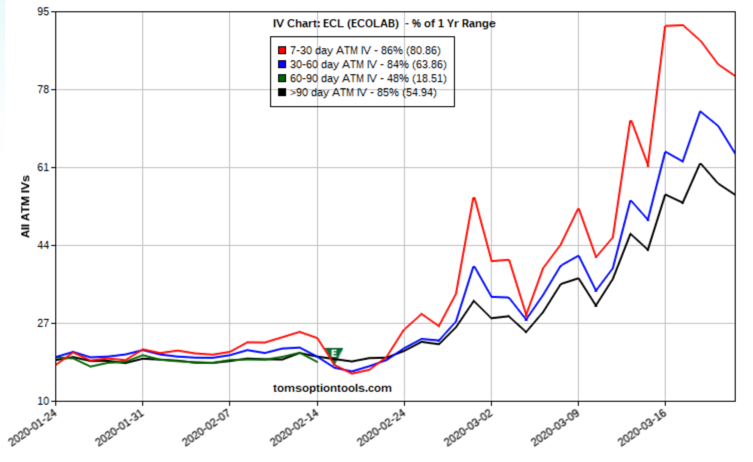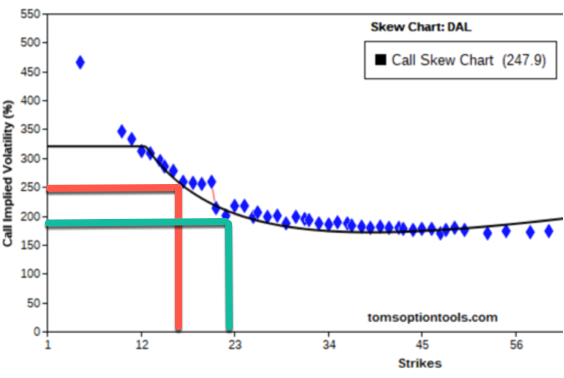Dear Red Alert Reader,
So you’re stuck at home with your state government’s version of a shelter-in-place order. You have a full tank of gas in the car, a secret stash of cash in the house, and enough nonperishables to feed your family for the next month or so.
You’re set for whatever this global pandemic throws your way next. And your biggest concern right now is boredom.
Believe me – I know the feeling. I’ve been sheltering in place for three weeks now.
In all honesty, it’s not that different from my typical day-to-day. My office is less than 90 feet away from my house after all. But just knowing that I can’t go anywhere is enough to make me feel antsy, especially on the weekends.
When the markets are closed, I find myself aimlessly wandering through the house, opening and closing the refrigerator 100 times in an hour and driving my wife crazy.
So instead, I’ve turned to researching, digging into every corner of the market. And I discovered three charts that show the best options strategies to consider during a shutdown.
The markets are down 30%. Volatility is up as much as 800%. Together, that makes these three strategies stand out…
- The Expensive Options Strategy

Here is a chart of Delta Air Lines Inc. (NYSE: DAL), one of the hardest hit stocks this year.
It’s not the candlestick chart I am concerned with. It’s the red line that’s moving higher as the stock moves lower. This line is the gauge of option prices. Looking back with 20/20 vision, it would have been nice to buy puts before the big drop.
But it’s too late for that. So what do you do now?
This chart says that you have a better statistical chance of making money by selling options first, then buying them back at a lower price. Now, this strategy is risky. You have a limited amount that you can make, and your risk is open-ended.
Another idea would be to sell out-of-the-money credit spreads on stocks with high volatility. By selling a higher-priced option and buying a lower-priced option, you’ll end up with a net credit instead of a debit, with a goal of keeping as much of that credit as possible. This allows you to sell at a high premium while taking advantage of probability with limited risk.
- The Buy-Later, Sell-Now Strategy

This chart graphs options over time. The red line represents short-term expiring options, the blue represents medium-term expiring options, and the black represents long-term expiring options. Notice that the red line is substantially higher than the black and blue lines. In fact, the short-term options are nearly 20% higher in volatility than the long-term options.
To play this, you should buy the longer-term options and sell the shorter-term options, creating a calendar spread. Both legs of the trade will have the same strike price, but the expiration date of the option you buy will be further out than the option you sell.
Volatility on options reaches zero at expiration, and this strategy allows you to take advantage of the drop in short-term volatility by hedging it with the longer-term option as protection.
- The Buy-This, Sell-That Strategy

This chart is referred to as a Volatility Skew Chart. It shows all option strikes across the bottom and their implied volatilities on the left-hand side.
Notice the $22 puts, represented by the green line, have less than a 200% volatility, while the $15 puts, represented by the red line, have a volatility of 250%. That’s roughly a 20% skew between these strikes.
We look to buy options that have a lower skew and sell options that have a higher skew, taking advantage of the irregular volatilities of these options.
Now, these aren’t your typical charts. In fact, less than 1% of options traders actually use these charts when evaluating trades, especially in times of crisis.
But you don’t want to be a “typical options trader.”
Instead, you want to look past the prices of stocks that everyone else can see. You want to look for the bigger picture – and that’s exactly what these charts allow you to do.
Good trading,

Tom Gentile
America's #1 Pattern Trader


